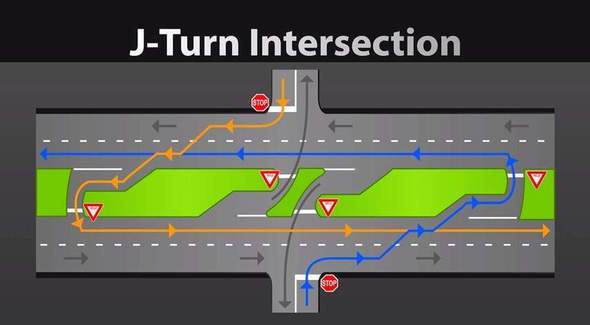Indiana’s
First J-Turn-Style Intersection Shows Dramatic Safety Improvements After Just
One Year
One year
ago today Indiana’s first J-Turn-Style intersection opened to traffic at U.S. 41 and State
Road 114 in Newton County. After analyzing the data, the Indiana Department of
Transportation found the statistics prove safety increased dramatically at the intersection.
In the
intersection’s first year of unrestricted traffic, only one minor crash
occurred.
From 2008 to mid-2015, the intersection averaged four
crashes a year, with almost 40% of those being injury crashes, including one
fatality. During the last 12 months, since the construction of the J-Turn-Style
intersection, there have been zero injury crashes. The intersection was the
scene of just one, minor fender bender.
“Overall things look good. That said,
we’re still observing data and we really can claim success after collecting
three years of crash data as we look for long-term averages. But, we’re pleased
so far,” says INDOT Northwest District Traffic Engineer, Alan Holderread.
During the first year in operation, INDOT Northwest
District Traffic crews replaced and relocated directional signs and also some
pavement markings in an effort to better delineate the new intersection. INDOT
hopes as more people get accustomed to this particular style intersection and
more of intersections of this type get built in Indiana, safety will continue
to improve for Indiana drivers.
What is a
J-Turn?
The
J-Turn is an alternative to traditional roadway intersections on four-lane
highways. Instead of motorists crossing fast-moving lanes of traffic to get to
the opposing lanes, drivers at a J-Turn intersection turn right, in the same
direction of traffic, merge into the left lane, and then make a left turn in
the direction they intend to travel. In addition, acceleration lanes are
constructed to allow traffic an opportunity to gain speed after turning onto
the highway.
Although drivers will
have to travel slightly further to get where they want to go, using J-Turns can
take the same or even less time than trying to wait for a safe and appropriate
gap to cross traffic.
Why are J-Turns Safer?
The goal of these turns
is to greatly reduce – or even eliminate -- a significant number of severe
crashes which are common when drivers must cross busy highways to reach another
road.
In a traditional
intersection of this type there are 42 different conflict points where an
accident can occur. Twenty-four of those 42 conflict points can result in
severe accidents (i.e. T-bone and right-angle accidents). J-Turn intersections
have no more than 29 possible conflict points. And some J-Turn intersections
can be designed so there are zero crossing conflict points.
For more information on the various types of Median U Turn exits click here. http://www.in.gov/indot/3392.htm
Subscribe to receive text and email alerts about
INDOT projects at. https://public.govdelivery.com/accounts/INDOT/subscriber/new

|